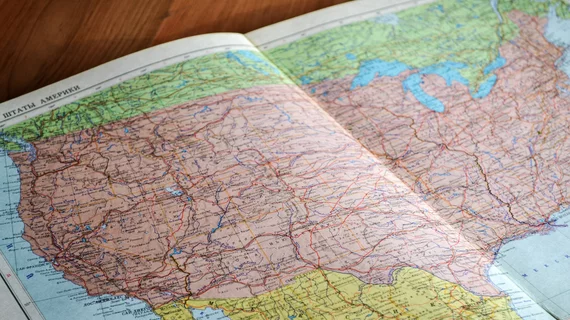Where Medicaid coverage is most prevalent
Medicaid has undergone significant changes over the last several years, both after states were allowed to expand the federal program under the Affordable Care Act and after President Trump recently announced states will be allowed to cap spending for the program.
The program covered 64 million individuals as of the end of 2019 and is quickly becoming a hot-button issue for the upcoming 2020 election. As the debate over eliminating waste and parsing down the program versus expanding Medicaid heats up, it is clear that not all states treat Medicaid in the same way, with some relying on it more than others.
WalletHub ranked all 50 states across 12 metrics to find where Medicaid was most prevalent, with the dataset covering total Medicaid spending per low-income population to adult care quality and children Medicaid eligibility level.
Here are the top 10 states ranked by Medicaid coverage:
- Massachusetts
- New York
- Vermont
- Rhode Island
- California
- Connecticut
- Pennsylvania
- Washington
- Alaska
- Oregon
States in the top tended to have more spending on Medicaid for its low-income population as well as higher quality care. States ranking among the bottom tended to have lower spending, lower enrollment numbers per low-income population as well as lower spending as a share of state budgets.
New York, which was ranked No. 2 overall, also had the highest total Medicaid spending per low-income population, followed by Massachusetts, Alaska, Vermont and Connecticut. The five states with the lowest spending included Florida, Oklahoma, Georgia, Alabama and Utah. Massachusetts ranked as the top states with the highest adult care quality, being home to a number of top-rated healthcare institutions. Connecticut, Maryland, Rhode Island and Wisconsin were also in the top five.
States ranking among the bottom for spending were also less likely to have expanded Medicaid under the ACA, which is covered 90% by the federal government.
“The expansion provides needed coverage for adults without children who have not been included in Medicaid coverage in most states,” Lynn Blewett, professor of health policy and director of the State Health Access Data Assistance Center at the University of Minnesota, said of the major benefits and drawbacks of Medicaid expansion. “Ninety percent of the expansion is covered by the federal government with limited contributions at the state level. There is some additional administration of processing and sustaining enrollment. A major limitation was that the states could opt out creating great disparities between states.”
And these are the bottom 10 states:
- Georgia
- Wyoming
- South Dakota
- Alabama
- Idaho
- Oklahoma
- Wisconsin
- Nebraska
- Maine
- South Carolina
See the full ranking here.

